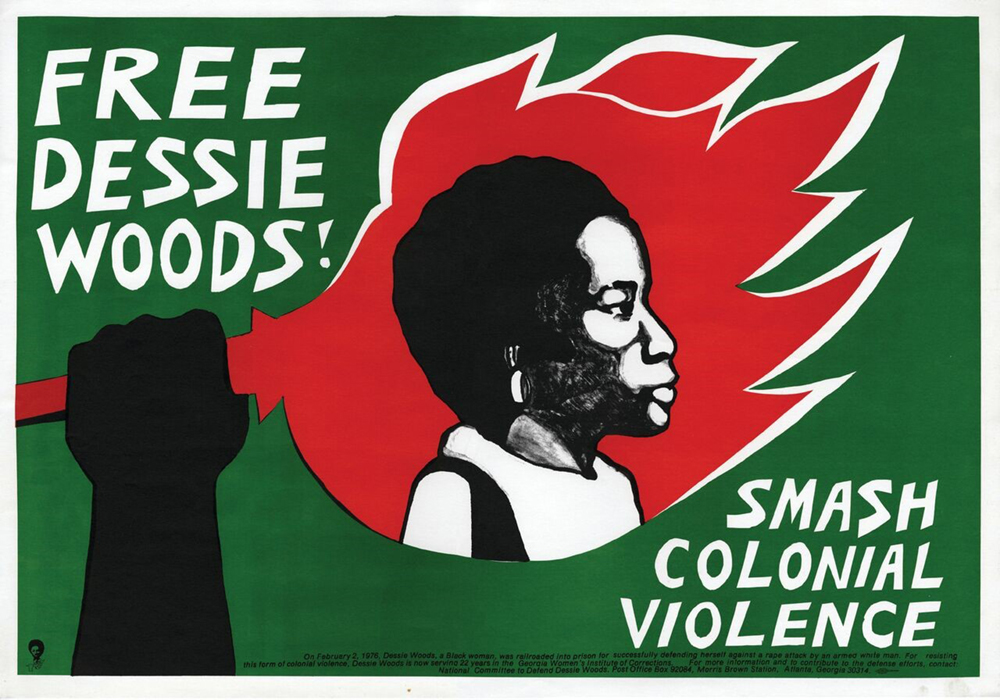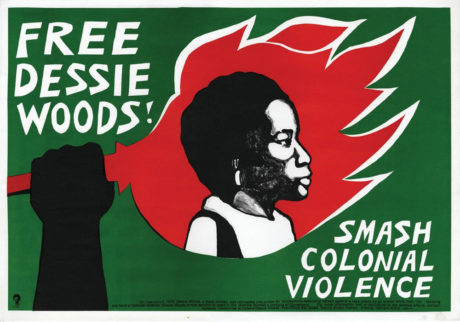Art in America, February 28, 2017
Published on April 24, 2024

Radical Images: The Visual Language of Protest
by Michael McCanne
Originally published at http://www.artinamericamagazine.com/news-features/news/radical-images-the-visual-language-of-protest/

Over the past few months, protests have erupted across the country, filling streets and airports, town halls and city parks. As the Trump administration implements its nationalist agenda, the protests will surely grow and intensify. Commentators have likened the political strife to that of the 1960s, and express disbelief that the country has arrived at such a divided and volatile state. This shock derives in part from the belief that, since that decade, this kind of unrest has been absent from American streets and politics, confined instead to election booths and the floor of Congress.
As an alternative to this narrative, two exhibitions in New York are presenting the cultural and documentary history of protests, riots, and revolution that took place over the last forty years, from the election of Richard Nixon to the end of the century. “Finally Got the News: The Printed Legacy of the U.S. Radical Left, 1970-1979,” at Interference Archive in Brooklyn through May 14, displays a collection of printed ephemera while “Whose Streets? Our Streets!: New York City, 1980-2000,” at the Bronx Documentary Center through March 5, presents photos of a city in tumult over race relations, the AIDS epidemic, and economic change. These exhibitions approach the historical specificity of their subjects through different mediums and contexts. But both remind us that conflict and protest are the common language of politics.
In the 1970s, protestors who had weathered the Civil Rights and anti-war movements hardened into urban revolutionary groups that battled on long after the mass movements petered out. “Finally Got the News” presents a sampling of the printed ephemera these groups left behind. Posters, booklets, and newspapers cover the walls of the archive’s small gallery, displaying the distinct visual language that protest movements developed. Some are large, colorful prints characteristic of anti-colonialism struggles elsewhere in the world, while others are stripped of images, mimicking the earnest graphic design of corporate instruction manuals or bulletins put out by public agencies.
The show represents major currents in activism of the ’70s: black liberation, Marxism, gay liberation, radical feminism, anti-imperialism, radical unionism, and indigenous struggles, as well as the various means used to deliver these messages, ranging from silkscreen to mimeograph. The well-worn imagery of the revolutionary left abounds-raised fists, AK-47s, Marx, Lenin, etc.-but there are less familiar images and subjects as well, such as a bilingual journal on the Eritrean struggle for independence from Ethiopia or another on Northwestern fishing rights replete with an Inuit woodcut under the title. One beautiful purple-and-green silkscreen print depicts an Angolan woman in traditional garb embracing a guerilla fighter in camouflage fatigues. It was produced by a print shop in San Francisco in solidarity with the struggle for national liberation in Angola.
Some of the causes are distant or historically removed, like solidarity posters for the anti-apartheid struggle in South Africa or against the dictatorship in Chile, while others feel painfully contemporary. One poster from 1973 calls for a demonstration in Manhattan against the acquittal of a white police officer on trial for killing Clifford Glover, a nine-year-old black boy. “Another police murder” is written across the top in carefully hand-lettered script.
Interference Archive is a collectively run repository and exhibition space dedicated to exploring and preserving the “relationship between cultural production and social movements,” as a mission statement on its website reads. It spans two rooms in a squat refurbished warehouse near the Gowanus Canal. They archive graphics and ephemera from social movements, ranging from the esoteric to protests as recent as Donald Trump’s inauguration.
Some of the material for the exhibition comes from the archive’s shelves but most is drawn from the private collection of Brad Duncan, who curated the show with the Interference team. Duncan has been collecting progressive and radical ephemera for years, assembling his own archive in his West Philadelphia home. When I asked how he chose the materials to display, he said he “wanted to show that these movements, while each coming out of their own autonomous historical experience, were united by currents that were explicitly anti-capitalist and also explicitly revolutionary, in so much as they were for destroying the state and creating something new in its place.” Josh MacPhee, Jen Hoyer, and others from the Interference collective helped make sure that the materials displayed a diversity of aesthetic styles and mediums. “One key reflection that we hope visitors will take away,” Hoyer told me, “is how print publications were used as a tool for community organizing.”
“Finally Got the News” takes its name from a 1970 documentary of the same name on the League of Revolutionary Black Workers, a group that successfully fused working-class politics with ideals of black liberation. Detroit features prominently in the show, in part because Duncan grew up there and in part because the city uniquely stood at the intersection of black urban life and powerful industrial unionism. It represented the New Left’s best hope for uniting identity and revolutionary class struggle. The revolution never materialized, however, and the disappearance of industrial jobs destroyed that avenue towards radical change just as surely as it destroyed the city of Detroit.
In another section of the exhibition, a 1977 copy of the anarchist tabloid Fifth Estate hangs on the wall amongst a collection of anti-authoritarian ephemera. Across an aerial shot of a vibrant and bustling downtown Detroit reads the caption, “Soon to be picturesque ruins.”
…continued online here